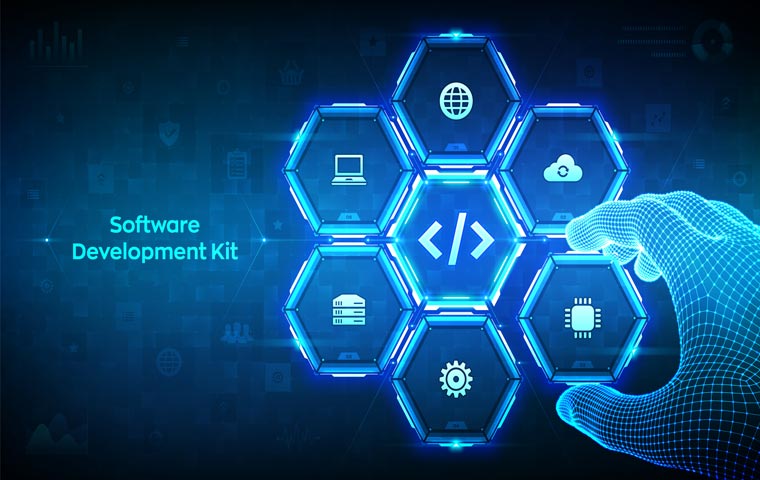In-App Purchases vs Ads: Which Strategy is Best?
You’ve created your app, and people are starting to download,...
We use cookies for our website to give you the most relevant experience by remembering your preferences. By clicking “accept”, you consent to use of ALL the cookies
This website uses cookies to improve your experience while you navigate through the website. Out of these, the cookies that are categorized as necessary are stored on your browser as they are essential for the working of basic functionalities of the website. We also use third-party cookies that help us analyze and understand how you use this website. These cookies will be stored in your browser only with your consent. You also have the option to opt-out of these cookies. But opting out of some of these cookies may affect your browsing experience.
Necessary cookies are absolutely essential for the website to function properly. These cookies ensure basic functionalities and security features of the website, anonymously.
| Cookie | Duration | Description |
|---|---|---|
| cookielawinfo-checkbox-functional | 11 months | This cookie is set by GDPR Cookie Consent plugin. The cookie is used to store the user consent for the cookies in the category “Analytics”. |
| cookielawinfo-checkbox-functional | 11 months | The cookie is set by GDPR cookie consent to record the user consent for the cookies in the category “Functional”. |
| cookielawinfo-checkbox-necessary | 11 months | This cookie is set by GDPR Cookie Consent plugin. The cookies is used to store the user consent for the cookies in the category “Necessary”. |
| cookielawinfo-checkbox-others | 11 months | This cookie is set by GDPR Cookie Consent plugin. The cookie is used to store the user consent for the cookies in the category “Other. |
| cookielawinfo-checkbox-performance | 11 months | This cookie is set by GDPR Cookie Consent plugin. The cookie is used to store the user consent for the cookies in the category “Performance”. |
| viewed_cookie_policy | 11 months | The cookie is set by the GDPR Cookie Consent plugin and is used to store whether or not user has consented to the use of cookies. It does not store any personal data. |
Functional cookies help to perform certain functionalities like sharing the content of the website on social media platforms, collect feedbacks, and other third-party features.
Performance cookies are used to understand and analyze the key performance indexes of the website which helps in delivering a better user experience for the visitors.
Analytical cookies are used to understand how visitors interact with the website. These cookies help provide information on metrics the number of visitors, bounce rate, traffic source, etc.
Advertisement cookies are used to provide visitors with relevant ads and marketing campaigns. These cookies track visitors across websites and collect information to provide customized ads.
Other uncategorized cookies are those that are being analyzed and have not been classified into a category as yet.
Cyberia Tech, Inc. respects your privacy. This Privacy Policy explains how we collect, use, and share your information. By using our services, you agree to this policy. If any other agreements conflict with this Privacy Policy, the terms of those agreements prevail.
Cyberia Tech complies with the EU-US and Swiss-US Privacy Shield Frameworks for handling personal data from the EEA, UK, and Switzerland. In case of any conflict, the Privacy Shield Principles prevail. Learn more at Privacy Shield. Key Definitions
Information linked to an individual, transferred from the EEA, UK, or Switzerland to the U.S.
Data revealing race, religion, health, sexual orientation, and similar categories.
Effective Date: [ 2025 / 11 / 28 ]
Welcome to The Cyberia Tech ! By accessing or using our website or services, you agree to
comply with and be bound by these Terms of Use and our Privacy Policy. If you do not agree with
these terms, please do not use our Services.
Loading
0 %

Apple has released several new Apple sdk versions for all its platforms. New versions have many features to bring a seamless experience for users. this blog will tell you the latest changes on swift data, widgets, live activities, app shortcuts, metals, machine learning, share play, and in-app purchase. Let’s dig into each of them.
Table of Contents
Swift Data is a new tool that helps you manage data in your apps. You can describe models using regular Swift code, without having to use any special editors. With Swift Data, you don’t have to worry about managing relationships between your data, undoing or redoing changes, or syncing with iCloud. It’s all taken care of for you! SwiftData works seamlessly with SwiftUI, ensuring that your data is easily accessible and your views are always current.
Widgets are getting stronger and appearing in more locations. WidgetKit now allows you to create interactive and animated widgets that enable users to take action directly within the widget. If you update your app for iOS 17, you can easily make your current widgets look great on StandBy mode for iPhone, the Lock Screen for iPad, and the desktop for Mac with just a few simple adjustments.

SwiftUI makes it easy for your widget to look great on different platforms by automatically adjusting its color and spacing based on the context. You can now use Live Activities on your iPad with WidgetKit and ActivityKit. This feature allows you to stay updated with real-time information from your app, directly from your Lock Screen.
By adopting App Shortcuts, your app’s main features will appear in Spotlight search results when users search for your app. The latest update includes a design that simplifies the process of using your app’s shortcuts. Additionally, there are new features that allow users to execute your shortcuts using their voice with greater flexibility. The Shortcuts app has been redesigned to make it easier for you to find and use your favorite features all in one place.
Metal is a technology that helps improve graphics on Apple devices. It does this by providing a special way for the device to handle graphics, which makes it faster and more efficient. Metal also includes tools that help developers test and fix any issues with their graphics. It’s now easier than ever to bring your games to Mac with the new game porting toolkit and Metal shader converter.
The Core ML framework has been updated to make model loading and inference even faster. The Async Prediction API makes it easier to create interactive experiences using machine learning and helps you use your hardware more efficiently. You can use the new Core ML Tools optimization module to compress and optimize your models for deployment on Apple hardware.

You can use weight pruning, quantization, and palletization tools to compress your model without losing accuracy. These tools can be applied while training your model in PyTorch or during model conversion.
To build custom models for images and text, you can use the Create ML app or framework that works with Apple’s latest visual feature extractors and multilingual transformer-based embeddings. It’s now easier than ever to create a model that understands image content! You can use multilabeled classification, interactive model evaluation, and new APIs for custom training data augmentations. That’s why apple sdk versions are a journey to a new Heights.
The Vision framework now has new APIs that can do some really cool things! They can help you separate different parts of an image, detect the poses of animals, and even detect the 3D pose of a human body using depth information.

With VisionKit, you can effortlessly incorporate Visual Lookup and subject-lifting features into your app. The Natural Language framework helps to better understand text in multiple languages by using advanced transformer-based embedding models.
With the Speech framework, you can easily add your own vocabulary for speech recognition. This way, you can create a more personalized experience for your users.
SharePlay allows you to share experiences with others in real-time while using FaceTime and Messages to connect. AirDrop in iOS 17 allows people to easily share activities with others who have compatible devices and apps that support SharePlay.
No extra steps are needed to get started. In iOS and iPadOS, it’s now easier to find SharePlay apps with the new share menu in FaceTime and the updated SharePlay user interface.
Apps that have SharePlay feature can quickly share big files with all the people in the session.SharePlay allows you to share experiences with others in real-time while using FaceTime and Messages to connect.
AirDrop in iOS 17 allows people to easily share activities with others who have compatible devices and apps that support SharePlay. No extra steps are needed to get started. In iOS and iPadOS, it’s now easier to find SharePlay apps with the new share menu in FaceTime and the updated SharePlay user interface. Apps that have SharePlay feature can quickly share big files with all the people in the session.
Apple making it easier for developers to understand how third-party SDKs use data by introducing privacy manifests. These files outline the privacy practices of the third-party code in an app, all in one standard format.
When developers are ready to share their app, Xcode will create a simple report by combining all the privacy information from the third-party SDKs they are using. Developers can create more accurate Privacy Nutrition Labels with just one report that summarizes all the third-party SDKs found in their app.

To better protect your privacy, apps that use APIs that could be used for fingerprinting (which is not allowed on the App Store) will now need to declare why they are using the API in the privacy manifest.
To use these APIs, apps need to provide a clear and truthful explanation of how they will use them. They can only use the APIs for the purposes they have stated in their privacy manifest.
Next, we aim to assist developers in enhancing the reliability of their software supply chain. Developers may find it difficult to verify if the code they downloaded from third-party SDKs was written by the expected developer.
At WWDC 23, Apple have introduced signatures for SDKs to make it easier for developers to adopt new versions of third-party SDKs in their app. With this feature, Xcode will validate that the SDK was signed by the same developer. This feature will be useful for both developers and users.
Apple’s iOS software development kit (iOS SDK) provides a set of resources for building iOS apps.
The SDK was developed using Apple’s robust and freely available programming language, Swift. This allows you to easily use the SDK’s frameworks, UI components, and APIs from within your Swift codebase.
Undoubtedly, Apple sdk version help developers improve software supply chain reliability. Developers may have trouble verifying the author of third-party SDK code. SDK signatures make it easy for developers to update third-party SDKs in their apps. Xcode checks the SDK’s developer signature with this capability. This functionality benefits developers and users.
You Can Get More Information!
